- Home
- UFAI in the News
- UFAI Medical Publications
- Getting Better Results with Bunion Surgery
Getting Better Results with Bunion Surgery
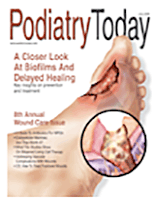
Bunion surgery is perhaps the most common procedure we perform in podiatry. Since bunions come in all shapes and sizes, several different types of procedures have emerged along with various refinements over the years.
Accordingly, let us take a closer look at what makes these procedures work well. Conversely, we need to ask some tough questions. Why do some bunion surgeries fail? Why do some people seem to recover better than others? How can we minimize poor outcomes? Our group has been involved in many revision bunion surgeries so there is a certain level of failures and complications.
In order to facilitate reproducible and successful short- and long-term results, surgeons must consider the impact of appropriate patient selection, patient education and expectations, procedure selection, technical aspects and postoperative care.
Key Patient Factors To Consider With Bunion Surgery
Granted, we are not able to choose the patients we see.We treat those who walk through the door and who are on our insurance plans. However, we are able to choose who we take to surgery. Being a discretionary physician in this regard will help produce more consistent results. For example, most of us would agree that a 65-year-old, one pack a day smoker who weighs 300 pounds is not an ideal candidate for a Lapidus procedure. Indications for purely cosmetic bunionectomies are questionable.
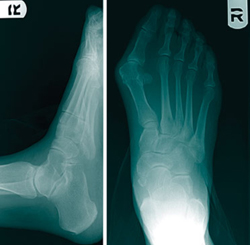
It is important to ask potential bunion surgery patients what they do on a daily basis. Ascertain what they do for work, how much time they can take off and if they have any upcoming trips. See if they have a deadline or a point when they need to be wearing regular shoes. Bear in mind that these "deadlines" can increase the anxiety level for both the patient and the surgeon.
If there is a narrow window for total healing time, avoid squeezing in a procedure. Prolonged post-op edema and pain seem to occur when someone is overly eager to accelerate healing. Patients who try to rush the healing are usually the ones who walk too much too early.We recommend placing a lot of responsibility on the patient after surgery. Explain to the patient that his or her healing is largely dependent upon the patient following your post-op protocol.
Smoking should be a relative contraindication to a Lapidus procedure or a first metatarsophalangeal joint (MPJ) fusion. While some smokers can heal a fusion, smoking certainly increases the risk for delayed union and nonunion of the arthrodesis. If the patient really needs a Lapidus, send him or her to a smoking cessation program. Otherwise, consider an alternative procedure.
Younger patients who develop bunions as young teenagers tend to have a more aggressive deformity that will require definitive corrective treatment to produce a good long-term result. If the patient needs a Lapidus or a base wedge osteotomy, do not shy away from it because the patient is only 16. Open growth plates will obviously play a role in the timing of surgery and the location of correction.
Do not hesitate to encourage patients to wait until they reach skeletal maturity in the first ray. You can address osseous correction more confidently if you are addressing a deformity involving closed growth plates.
Facilitating Patient Education And Meeting Expectations
It is important to discuss with patients their expectations from the proposed bunion surgery.How much time can they expect to be off from work? What do they do for work? We have found that the people who become frustrated a month or six weeks following bunion surgery are the ones who had ìexpectedî to be feeling better by then or thought they would be back in high heels by that time. It is important to discuss with patients what they can expect regarding scar length and position.We prefer a medial bunion incision near the junction of the plantar and dorsal skin. This usually produces a nicer cosmetic result than a dorsal or dorsal-medial incision.
Toe position can be a source of complaint following bunion surgery. What looks acceptable to us might not be what the patient had in mind. Prior to surgery, discuss with patients the proper position of the hallux and what they can expect. An arrow straight toe can be a source of irritation in shoes. Mild abduction is the preferred position. Obviously, one should avoid any over- or under-lapping of the second toe, as well as uncomfortable abutting of the second toe. Utilizing a gel toe spacer in the six-week postoperative period can help maintain the toe position correction.
When there is pain at the bunion bump, surgery usually focuses on correcting the deformity at this level. Hallux abduction correction is not always fully addressed. Decide at the pre-op visit if you will consider a possible phalangeal osteotomy. A brief discussion with the patient can prevent the post-op comment, "I just thought my toe would be straighter."
Pertinent Insights On Procedure Selection
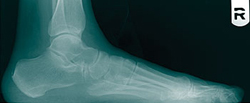
Choosing the right procedure is such an important part of achieving good short and long-term results.
It is important to avoid a cookie-cutter approach to bunion surgery.There are different types of procedures, ranging from Akin phalangeal osteotomies to the most common head procedures and the Lapidus arthrodesis. Each of these procedures has its indications. It is important to be well versed in and comfortable with procedure selection as well as the technical execution of the surgical procedure.
It is a nice adjunct at the pre-op visit to discuss bunion surgery in general. Talk to patients about all the different kinds of bunion procedures and then explain why you have chosen your specific procedure. Increasing patient understanding always seems to be worth the time. Also, if they have had another opinion or seek another opinion, they can say, Yes, Dr. X talked to me about that procedure and this is why he or she made his recommendation.
The choice of fixation can have a major impact on the immediate postoperative period. If you have achieved strong skeletal fixation, you will be more comfortable having the patient perform early range of motion and weightbearing. Strong fixation also helps reduce the chance of a displaced capital fragment and delayed union, or loss of correction.
The revision bunionectomies that we have seen and performed address the undercorrection of a wide intermetatarsal (IM) angle, correction of hallux abductus and repairing a dorsiflexed capital fragment.
Nonunion of the Lapidus arthrodesis is popular to talk about but the main complication we have seen is dorsiflexion of the first ray. Other complications may include an undercorrected intermetatarsal (IM) angle and shortening of the first ray. In regard to the Lapidus procedure, while one is placing the temporary fixation, be sure to plantarflex and abduct (with laterally directed pressure) the first metatarsal.
We usually shift the first metatarsal plantarly on the medial cuneiform a bit as well.You can minimize nonunion of the arthrodesis site by using osteotomes and curettes to resect the joint surfaces, and aggressively fenestrate with a 0.062- inch K-wire.
As surgeons become comfortable with bunion surgery, we often begin to take shortcuts. For example, some may not use intraoperative fluoroscopy. It is an easy adjunctive part of a bunionectomy that only takes a couple of minutes. It can show you things you cannot always adequately visualize.These things include the position of the sesamoids, any shortening of the first metatarsal, and both the length and position of the screws.
Aggressive soft tissue correction after an osteotomy, such as a medial capsulorrhaphy, can lend to postoperative stiffness of the first MPJ.We advocate an elliptical capsular excision at the dorsomedial shoulder of the first metatarsal.This helps pull the sesamoids medially and removes some redundant capsule following the bone resection.
Essential Pointers On Postoperative Care
We have found that the postoperative period can be as equally important as the performance of the procedure itself. Postoperative complications are often the result of not matching the appropriate procedure with the right patient. A Lapidus arthrodesis may be indicated based on exam and radiographs.
However, this might be a poor procedure choice if the patient cannot or will not remain non-weightbearing until fusion occurs. Appropriate patient selection can minimize nonunion, delayed union or a return to the OR.
In our practice, postoperative physical therapy significantly improves our outcomes. If you do not have a working relationship with a physical therapist,we recommend finding one who will work with you. Talk to the physical therapist about the post-op protocol for different procedures.A physical therapist can be a huge asset in postoperative management and often facilitates better short- and long-term surgical results.
For example, a benefit of rigid internal fixation in bunion surgery is to allow early weightbearing and range of motion.We have found that waiting one month following bunion surgery to mobilize the first MPJ joint makes things more difficult. Significant and excessive range of motion, and over-ambulation immediately following bunion surgery will increase the amount of scar tissue that will form in the deep soft tissues.
In our experience, we have found good results by initiating a course of physical therapy as soon as one removes the sutures. A few days prior to this, the patient can begin gentle range of motion.
In Conclusion
Bunion surgery is a dynamic area within our profession.We should challenge ourselves to improve our outcomes, doing whatever we can to increase patient satisfaction and strive for good short- and long-term results.
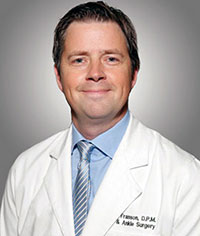
Dr. Franson practices with the University Foot and Ankle Institute in Los Angeles. He also works part-time as teaching faculty and an attending surgeon at the West Los Angeles Veterans Affairs Healthcare Center, and the Olive View UCLA Medical Center in Los Angeles.
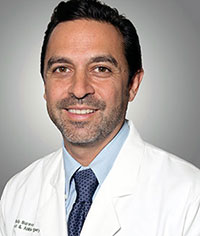
Dr. Baravarian is an Assistant Clinical Professor at UCLA School of Medicine. He is the Chief of Foot and Ankle Surgery at Santa Monica UCLA Medical Center and Orthopedic Hospital, and is the Director of the University Foot and Ankle Institute in Los Angeles.
 Dr. Jafary was excellent in his ability to put you at ease, lay out all options and recommendations, and make himself available...Sandra M.
Dr. Jafary was excellent in his ability to put you at ease, lay out all options and recommendations, and make himself available...Sandra M. This operation runs like a well oiled machine! Every aspect has been smooth and easy. Doctor Baravarian has been awesome and ve...Carol M.
This operation runs like a well oiled machine! Every aspect has been smooth and easy. Doctor Baravarian has been awesome and ve...Carol M. Great experience. Great communication. Great direction for my care. Very happy I chose to go with this particular doctor and o...Christopher R.
Great experience. Great communication. Great direction for my care. Very happy I chose to go with this particular doctor and o...Christopher R. Great service and care. Highly recommend Dr. Franson.David B.
Great service and care. Highly recommend Dr. Franson.David B. If you have to go see a Doctor than this is a great experience.Frank M.
If you have to go see a Doctor than this is a great experience.Frank M. My doctor was great. Really greatRudolph B.
My doctor was great. Really greatRudolph B. Good.David E.
Good.David E. Your Santa Barbara office and Dr. Johnson always give me excellent care!Jayne A.
Your Santa Barbara office and Dr. Johnson always give me excellent care!Jayne A. Dr. Gina Nalbadian was amazing!! I came in with an emergency foot situation and she had wonderful bedside manner and resolved m...Danielle C.
Dr. Gina Nalbadian was amazing!! I came in with an emergency foot situation and she had wonderful bedside manner and resolved m...Danielle C. I was frustrated that after 3 weeks I still hadn’t heard back about my PT referral status. And I did sit in a room for over 30 ...Sarah C.
I was frustrated that after 3 weeks I still hadn’t heard back about my PT referral status. And I did sit in a room for over 30 ...Sarah C. Great care....Been going here for years!Mary B.
Great care....Been going here for years!Mary B. I’m very pleased with Dr. Kelman.Alan S.
I’m very pleased with Dr. Kelman.Alan S.
-
 Listen Now
How to Choose Running Shoes: 6 Essential Steps
Read More
Listen Now
How to Choose Running Shoes: 6 Essential Steps
Read More
-
 Listen Now
The Link Between Foot Health and Posture
Read More
Listen Now
The Link Between Foot Health and Posture
Read More
-
 Listen Now
Why Are My Feet Different Sizes? It's More Common Than You Think
Read More
Listen Now
Why Are My Feet Different Sizes? It's More Common Than You Think
Read More
-
 Listen Now
Common Foot Problems In Aging Feet: What To Watch Out For
Read More
Listen Now
Common Foot Problems In Aging Feet: What To Watch Out For
Read More
-
 Listen Now
Custom Orthotics vs. Over-the-Counter Inserts: Which Are Best for Your Feet?
Read More
Listen Now
Custom Orthotics vs. Over-the-Counter Inserts: Which Are Best for Your Feet?
Read More
-
 StimRouter: A Revolutionary Approach to Targeted Pain Relief
Read More
StimRouter: A Revolutionary Approach to Targeted Pain Relief
Read More
-
 State-of-the-Art CT Scanning, Now in Our Office
Read More
State-of-the-Art CT Scanning, Now in Our Office
Read More
-
 Listen Now
Revealing the Secrets of Men's and Women's Shoe Sizes: Why Are They Different?
Read More
Listen Now
Revealing the Secrets of Men's and Women's Shoe Sizes: Why Are They Different?
Read More
-
 Listen Now
The Power of Pediatric Flexible Flatfoot Procedures
Read More
Listen Now
The Power of Pediatric Flexible Flatfoot Procedures
Read More
-
 Listen Now
15 Summer Foot Care Tips to Put Your Best Feet Forward
Read More
Listen Now
15 Summer Foot Care Tips to Put Your Best Feet Forward
Read More
-
 Listen Now
Is Barefoot Running Better? Or are you Running Toward Injury?
Read More
Listen Now
Is Barefoot Running Better? Or are you Running Toward Injury?
Read More
-
 Listen Now
Revolutionizing Extremity Imaging: UFAI's Open MRI for the Foot and Ankle
Read More
Listen Now
Revolutionizing Extremity Imaging: UFAI's Open MRI for the Foot and Ankle
Read More
-
 Listen Now
9 Running Tips from Sports Medicine Experts
Read More
Listen Now
9 Running Tips from Sports Medicine Experts
Read More
-
 Listen Now
An Inside Look at Shockwave Therapy for Heel Pain, now available in Valencia, CA
Read More
Listen Now
An Inside Look at Shockwave Therapy for Heel Pain, now available in Valencia, CA
Read More
-
 Listen Now
If the Shoe Fits, Wear it… Especially for Kids Shoes!
Read More
Listen Now
If the Shoe Fits, Wear it… Especially for Kids Shoes!
Read More














